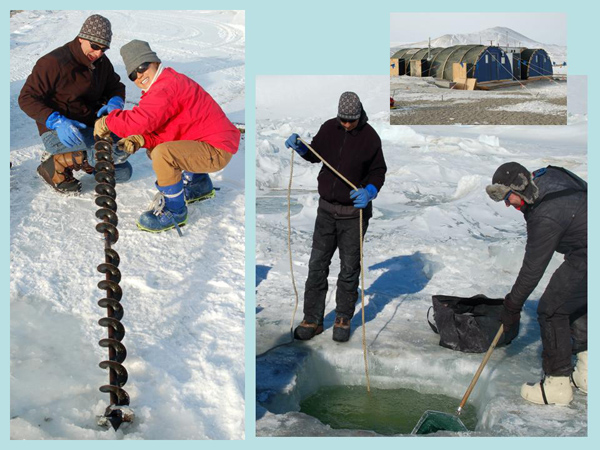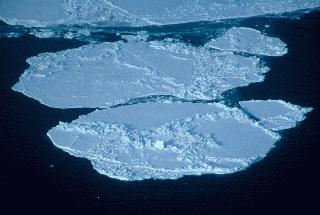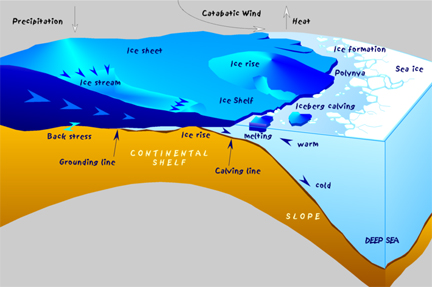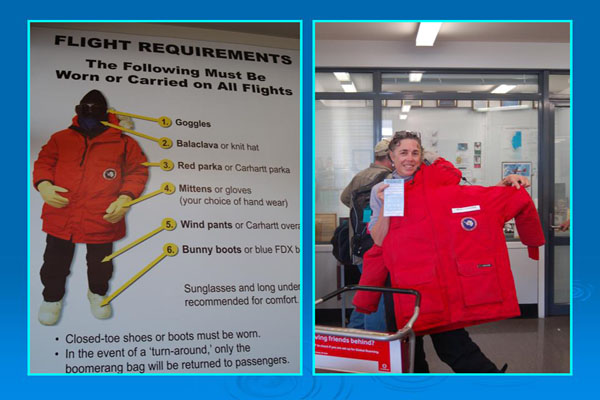
Image courtesy of S.E. Walker | ||||
| ||||
You might also be interested in:

Traveling Nitrogen Classroom Activity Kit
Check out our online store - minerals, fossils, books, activities, jewelry, and household items!...more
Sea Ice in the Arctic and Antarctic
Sea ice is frozen seawater. It can be several meters thick and it moves over time. Although the salts in the seawater do not freeze, pockets of concentrated salty water become trapped in the sea ice when...more
Glaciers and Ice Sheets
For a glacier to develop, the amount of snow that falls must be more than the amount of snow that melts each year. This means that glaciers are only found in places where a large amount of snow falls each...more
Wind
Wind is moving air. Warm air rises, and cool air comes in to take its place. This movement creates different pressures in the atmosphere which creates the winds around the globe. Since the Earth spins,...more
Antarctic Weather
Antarctica is the southernmost continent on Earth, and since it’s home to the South Pole it is probably no surprise that the weather here is very cold—in fact, Antarctica is quite a bit colder than even...more
Christchurch, New Zealand
Landing in Christchurch, New Zealand, one of the world's windiest airports, is unforgettable. Snowcapped Southern Alps, braided streams criss-cross the landscape amidst a patchwork quilt of green pastures,...more
Clothing Distribution Center, United States Antarctic Program
I live near Atlanta, Georgia, where "CDC" means the Center for Disease Control. In Christchurch, "CDC" means the Clothing Distribution Center for the United States Antarctic Program. At this Center, workers...more
Boarding U.S. Airforce C-17 Globemaster III
Finally the fax arrived that weather conditions in Antarctica had improved dramatically, and our flight was scheduled for noon on October 10. On that day, we hurried to the CDC, donned our Extreme Cold...morePlease log in
Science Blogs
Real Climate: climate science from climate scientists

Windows to the Universe, a project of the National Earth Science Teachers Association, is sponsored in part is sponsored in part through grants from federal agencies (NASA and NOAA), and partnerships with affiliated organizations, including the American Geophysical Union, the Howard Hughes Medical Institute, the Earth System Information Partnership, the American Meteorological Society, the National Center for Science Education, and TERC. The American Geophysical Union and the American Geosciences Institute are Windows to the Universe Founding Partners. NESTA welcomes new Institutional Affiliates in support of our ongoing programs, as well as collaborations on new projects. Contact NESTA for more information.




